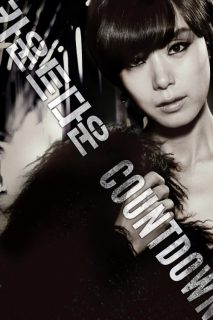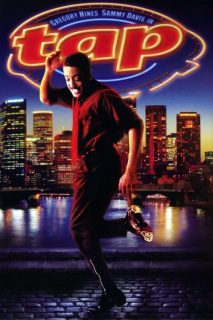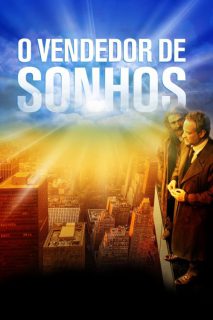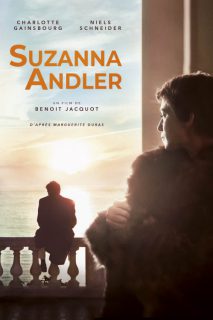
- Year: 1938
- Released: 26 Aug 1938
- Country: United States
- Adwords: Nominated for 4 Oscars. 2 wins & 5 nominations total
- IMDb: https://www.imdb.com/title/tt0030418/
- Rotten Tomatoes: https://www.rottentomatoes.com/m/marie_antoinette
- Metacritics: https://www.metacritic.com/movie/marie-antoinette
- Available in: 720p, 1080p,
- Language: English
- MPA Rating: Passed
- Genre: Biography, Drama, History
- Runtime: 149 min
- Writer: Claudine West, Donald Ogden Stewart, Ernest Vajda
- Director: W.S. Van Dyke, Julien Duvivier
- Cast: Norma Shearer, Tyrone Power, John Barrymore
- Keywords: revolution, french revolution, marie antoinette, versailles, locksmith, epic,
 | 7.3/10 |
Marie Antoinette Storyline
The life of Marie Antoinette (1755-1793) from her betrothal and marriage in 1770 to her beheading. At first, she’s a Hapsburg teenager isolated in France, living a virgin’s life in the household of the Dauphin, a shy solitary man who would rather be a locksmith. Marie discovers high society with the help of Orleans and her brothers-in-law. Her foolishness is at its height when she meets a Swedish count, Axel de Fersen. He helps her see her fecklessness. In the second half of the film, she avoids an annulment, becomes queen, bears children, and is a responsible ruler. The affair of the necklace and the general poverty of France feed revolution. She faces death with dignity.—
Marie Antoinette Photos



Marie Antoinette Torrents Download
| 720p | web | 1.41 GB | magnet:?xt=urn:btih:BDA5CBCA1FD5378E06C2C94AC5C8A5083EC38F6C | |
| 1080p | web | 2.62 GB | magnet:?xt=urn:btih:982B6ACFFDDB88829EBAAA4D5A44437527A1C034 |
Marie Antoinette Subtitles Download
| English | subtitle Marie.Antoinette.1938.DVDRip.XviD-VoMiT | |
| French | subtitle Marie Antoinette (1938) |
Marie Antoinette Movie Reviews
absolutely adored it – and Adrian worked overtime
Adrian went all out for this lavish, gorgeous production of “Marie Antoinette” starring Norma Shearer, who is never more beautiful or glamorous than in this epic biography. This Marie is quite the heroine, a woman of the people, generous to a fault, and never says, “Let them eat cake,” and would only have said it in reference to her children. History tells us that Marie’s downfall was really the “Affair of the Necklace,” and she was no different from other aristocrats in being totally out of touch with what was going on with the French people.
This film is jaw dropping in its splendor. Adrian’s costumes are totally magnificent, as are the palace settings. Tyrone Power is drop-dead gorgeous as Marie’s Swedish lover, who comes to her aid in her time of need. Power was the inspiration for Barbara Cartland to say, when asked how she could write so convincingly about sex while she was a still a virgin, “We didn’t need sex. We had Tyrone Power.” The rest of the cast is fantastic, including Robert Morley, John Barrymore, Joseph Schildkraut, and Gladys George. As for Norma, she does a great job, giving a vivid, if movie star, performance in one of her last films. The last scenes are very touching and beautifully done.
I had no expectations for this film and as a rule am not crazy about period pieces, but this one swept me away. It does follow history quite closely – for those who commented that the Tyrone Power character was fictional, he was not, and he did try to help her.
Don’t miss this one.
**A funny Marie Antionette anecdote: The studio wanted Shearer to use their contract star, Robert Taylor, but Shearer got a look at Power at a dinner, invited him to be part of the film, and got her way. During their first kiss, she held on so long the kiss had to be edited down. Power apparently did not return her affections. She became angry. At a photo shoot, she appeared with gigantic plumes that hid him as he posed behind her and the plumes shot up. The photographer gave Power a box to stand on. As the photographer activated the flash, Power crashed through the box and hit the floor. Though he escorted Shearer to the premier, he snuck out to see his soon to be wife, Annabella.
MGM’s lavish look at the French Revolution…a Shearer triumph…
MGM’s lavishly budgeted look at the French Revolution during the reign of King Louis and his famously selfish MARIE ANTOINETTE spares no expense in detailing the grim background of court conspiracies and the people’s unrest that led to their downfall.
Too bad none of this eye-popping splendor wasn’t captured in Technicolor, as originally planned–but with a budget well over 1.5 million it was decided to film it in glorious B&W. No matter, it’s still a spectacle for sore eyes.
There can be no doubt about NORMA SHEARER’s triumph in the title role nor is any of the acting in the large cast below standard. ROBERT MORLEY as the weak and indecisive Louis is immensely touching and effective as he realizes the gravity of their predicament. JOHN BARRYMORE is fine and Joseph SCHILDKRAUT is wonderful as an aristocratic fop. TYRONE POWER lends his romantic presence to a role that requires little more than his good looks. He and Shearer make a physically appealing romantic team.
It’s interesting that Irving Thalberg died before production began on the film. One wonders whether his influence on it might have made it an even stronger production. There are definite lulls in the telling but it builds dramatically to all of the final scenes. It’s the kind of film that leads one to read more about the actual events and that’s always a good thing.
Summing up: Sumptuously produced, well acted and well directed–what more could you want for an interesting glimpse of a life of royalty among a time of social upheaval? Shearer’s triumphant return to the screen after a two-year absence.
Top Ten Reasons why “Marie Antoinette” is quite possibly the best movie ever made in Hollywood
10. The script
Uncredited as a scriptwriter is novelist F. Scott Fitzgerald. His love scenes are extremely elaborate and exquisitely structured. They also introduce innovations that have since become clichés and the hallmark of ‘women pictures’ everywhere.
9. The actors
Barrymore is unforgettable as the regally cranky Louis XV. Morley gives one of his best interpretations. Schildkraut plays the best two-faced villain of his entire body of work. As for Power… remember the anecdote about the reporter asking romance-writer Barbara Cartland (Lady Di’s stepmother) how she could possibly have written so many romance novels before she was even married and while she was still a virgin? Her answer was: ‘Oh! We didn’t have sex in those days. We had Tyrone Power.’
8. The director
Van Dyke was an expert at handling large crowds and acts of God. His directing style was a compromise between time-efficiency and giving the stars leeway as long as they respected the general style of the piece. This ‘honour system’ seems to have encouraged the actors to do their homework and present a credible, coherent performance every time. He also got an assist here from uncredited French genius Julien Duvivier.
7. Artistic direction
What can you say about a period film that tackled the challenge of recreating Versailles in the XVIIIth century on the MGM back lot? The production values are staggering. The Gallery of Mirrors is actually longer, higher and wider than the original. The costumes tread a fine line between historical accuracy (covered shoulders and revealed cleavage) and the requirements of the movie code (exposed shoulders were tolerated but bosoms had to be covered) but still manage to convey the era and the fairy-tale quality of Marie’s court. The costumes were also specially constructed to shine, glitter and shimmer on black and white film.
6. Historical accuracy
The film’s script is based (in part) on Stefan Zweig’s groundbreaking biography of the Queen, “Marie Antoinette, Portrait of an Ordinary Woman”, which tried to create the first accurate, adult, factual but Freudian-inspired narrative of the Queen’s life by using documents and correspondence that had long been overlooked or suppressed. The book was the first to reveal Louis XVI’s mechanical sexual problems, which prevented his consummating the marriage during its first seven years (until a slight surgical intervention) and explained in turn the Queen’s extravagant spendthrift personality, in Freudian terms, as extreme sexual frustration. This story actually makes it to the screen in a large degree. Compare this to recent biopics like “A Beautiful Mind”, whose scriptwriters conveniently ‘forget’ essential but non-mainstream plot elements like the fact that John Nash’s paranoia may have been caused or amplified by the McCarthy era persecution of homosexuals. Some historical events have been telescoped into one another in order to accommodate the general American public’s limited understanding of French history and the Orléans character was used to maintain tension by representing the turncoat part of the nobility which exploited MA for their own various agendas.
5. The music
Herbert Stothart may not be a household word but he did win an Oscar for his original score to “The Wizard of Oz”, based, of course in part on Harold Arlen’s melodies. Besides giving Miss Gulch/the Wicked Witch her immortal theme, he is also one half of the composing team that produced the operetta “Rose Marie”. Stothart shines in two respects: the approximate recreation of XVIIIth century dance music in the court scenes, emphasizing the bored grandeur of the proceedings, and the psychological music that accompanies everything from exciting chase scenes to the love scenes between Shearer and Tyrone. Note especially the use of the harpsichord in a rupture scene between Orléans and MA and the use of the viola d’amour in the garden love scene.
4. The cinematography
MA is in ‘glorious black and white’, but especially in the escape to Varennes sequence which has the most credible – and suspenseful – ‘day for night’ sequence ever filmed. The marriage scene may have inspired Queen Elizabeth II’s coronation. Also notable are the matte paintings, the overwhelming use of cranes to move in on particular characters in a crowd scene and the chiaroscuro of the last meeting with Fersen.
3. Detail and scope
Every scene has something special added to it in characterization, movement, rhythm, lighting, art direction, choreography (and not just in the dance scenes). The costumes could have starred in a picture by themselves.
2. The lost art of story-telling
This film was planned with intelligence and skill and was built around the principle stated by Selznick when filming GWTW: ‘The secret of adapting a book to the screen is to give the impression that you are adapting a book to the screen.’ Which means that many literary devices are used to give the story many interesting arcs and recurring themes. The story is well balanced in terms of spectacular action, recreation of important historical events (giving the impression of the passage of time) and intimate scenes. It is truly ‘the intimate epic’ that Mankiewicz’s ‘Cleopatra’ was supposed to be. Need I add I am really dreading the Sofia Coppola version…
1. Norma Shearer
Norma Shearer is an unjustly forgotten star of the first magnitude. MA is permanent testament to her uncanny abilities. In this film she portrays the main character from the age of sixteen to her death as a prematurely aged and debilitated woman of 38, all with perfect verisimilitude, thanks to her magnificent vocal instrument and stage presence. As a fairy-queen, she makes Cate Blanchett as Galadriel (in LOTR) look like Carol Burnett’s charwoman. Her virtuosity as the fated widowed Queen is all the more poignant when one realizes that at the time she was Thalberg’s widow in her last husband-approved venture and that the Hollywood suits were rapidly closing in on her.



